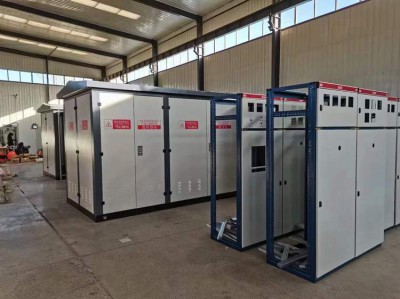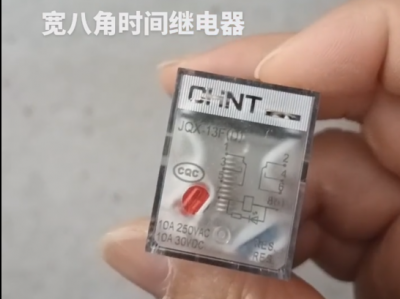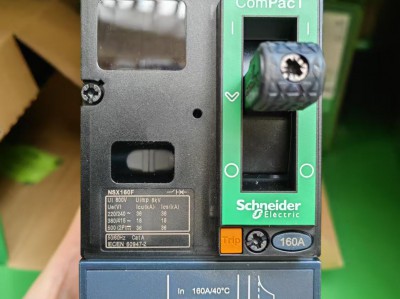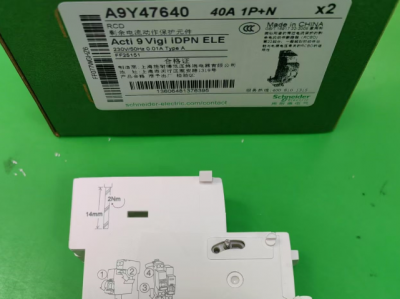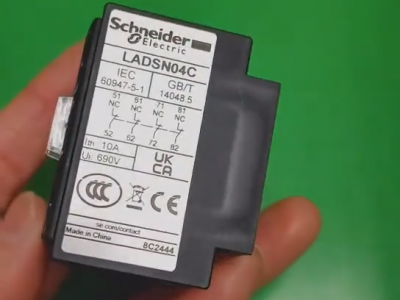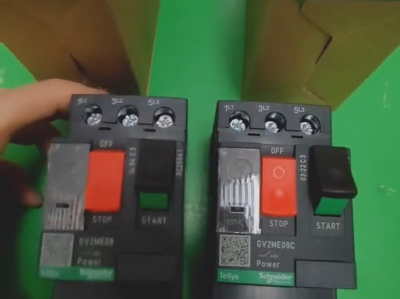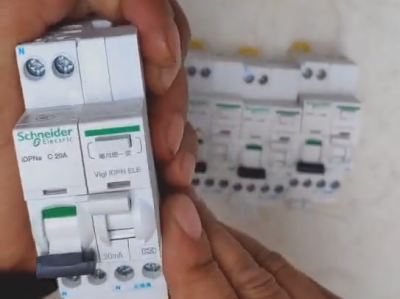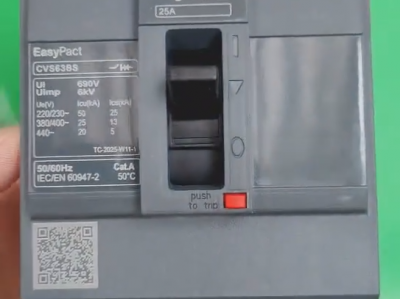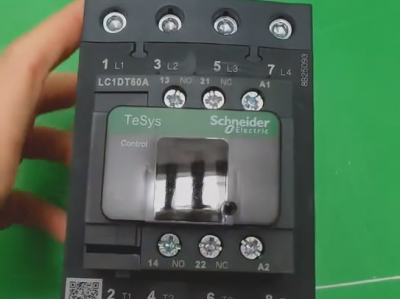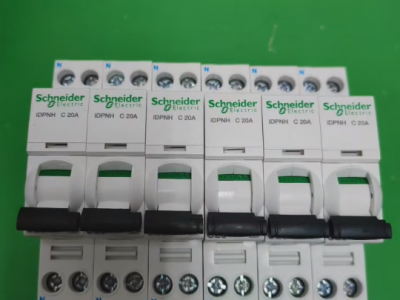Chint NXM630S/3300-630A MCCB
Product description
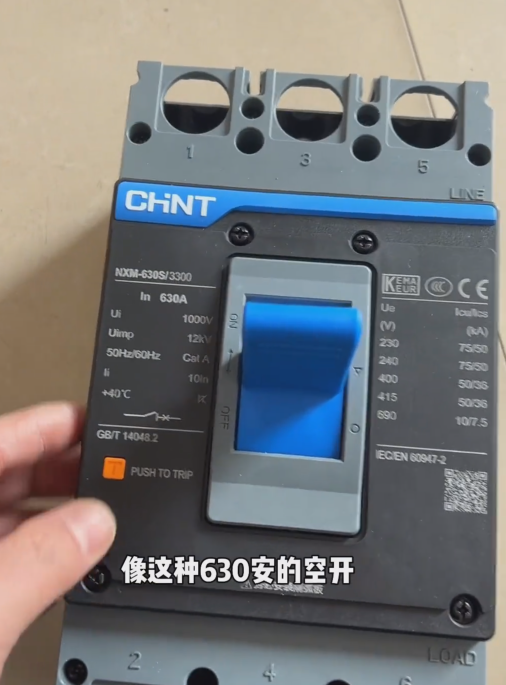
Chint NXM630S/3300-630A is a molded case circuit breaker (MCCB), suitable for overload and short-circuit protection in industrial and commercial power distribution systems, as well as for controlling the on-off operation of normal circuits.
I. Model Meaning and Product Positioning
- Model Interpretation
- **NXM**: Series code for Chint's molded case circuit breakers.
- **630**: Frame current rating, indicating that the maximum rated current-carrying capacity of the circuit breaker is 630A.
- **S**: Breaking capacity class (Standard), corresponding to a breaking capacity of 50kA (at AC400V), suitable for power distribution systems with medium-level short-circuit current.
- **3300**:
- First **3**: Number of poles, which is 3P (three-phase).
- Second **3**: Trip unit type, which is thermal-magnetic (providing both overload long-time delay protection and short-circuit instantaneous protection).
- Last two **00**: No internal accessories (such as auxiliary contacts, shunt trip devices, etc.).
- **630A**: Rated operating current, i.e., the maximum current value at which the circuit breaker can operate stably for a long time.
- Product Positioning
It is a standard-type product in the NXM series, featuring high cost-effectiveness and reliability. It is widely used in power distribution systems for industry, construction, and infrastructure.
II. Key Technical Parameters
1. Electrical Performance
- **Rated Voltage**: AC690V (suitable for three-phase systems).
- **Breaking Capacity**: 50kA (ultimate short-circuit breaking capacity ICU at AC400V), meeting the short-circuit protection requirements of most conventional power distribution scenarios.
- **Tripping Characteristics**:
- Overload Long-Time Delay Protection (Class L): Inverse-time action, with a current setting range typically of 0.7-1.0 times the rated current.
- Short-Circuit Instantaneous Protection (Class I): Instantaneous action, with a current setting generally of 5-10 times the rated current.
2. Mechanical and Environmental Specifications
- **Installation Method**: Fixed type, with circuits connected via front-panel wiring. It has a compact structure and is easy to install.
- **Operation Method**: Manual operation, with a standard-equipped handle for direct control of circuit on-off.
- **Operating Ambient Temperature**: -5℃ to +40℃, adaptable to most industrial environments.
III. Application Scenarios
1. Power Distribution System Protection
- Used as a main circuit breaker or branch circuit breaker to protect the circuit safety of transformer outgoing lines, power distribution cabinets, and motor control centers (MCCs), preventing equipment damage or fire risks caused by overload and short-circuit faults.
2. Motor Control
- Can be used for infrequent starting and operation protection of motors, but attention should be paid to whether its tripping characteristics match the motor's starting current curve. For frequent starting or high-impact loads, it is recommended to match it with an electronic trip unit or a dedicated motor protection circuit breaker.
3. Temporary Power Supply and Emergency Systems
- Due to its stability and ease of installation, it is often used in scenarios such as temporary construction power supplies and backup power generation systems.
IV. Installation and Selection Recommendations
1. Installation Key Points
- Ensure the installation location has good ventilation, and avoid high-temperature and humid environments.
- When wiring, connect the power cables (P1, P2) and load cables in accordance with the nameplate markings, and tighten the terminals to prevent poor contact.
- If function expansion is required (e.g., remote control), optional accessories such as auxiliary contacts (for alarm or status indication) and shunt trip devices (for remote opening) can be selected, but attention must be paid to model compatibility.
2. Selection Notes
- **Breaking Capacity Matching**: Select an appropriate breaking capacity class (e.g., S=50kA, H=70kA) based on the short-circuit current level of the system where it is used, to avoid circuit breaker failure due to insufficient breaking capacity.
- **Rated Current Margin**: It is recommended to set the rated current of the circuit breaker to 1.2-1.5 times the calculated load current, so as to cope with short-term overloads and equipment starting currents.
- **Pole Number Selection**: Select 3P (three-phase three-wire) or 4P (three-phase four-wire) according to system requirements. A 4P circuit breaker can disconnect the neutral line (N pole) simultaneously, making it suitable for systems that require leakage protection or neutral point grounding.
V. Market Reference and Alternative Solutions
1. Price Range
- The 2025 market price is approximately 489.6 RMB to 738.4 RMB per unit.
2. Alternative Models
- **Chint NM1 Series**: For example, NM1-630S/3300, which also has a breaking capacity of 50kA but is designed with a greater focus on cost-effective applications.
- **Schneider EZD Series**: For example, EZD630E-630A, with a breaking capacity of 25kA, suitable for scenarios with low short-circuit current. Its price is slightly higher but it has higher brand recognition.
VI. Certification and After-Sales Service
- Certification Standards
It has passed the CCC certification (China Compulsory Certification), complies with the requirements of the GB/T 14048.2 standard, and some models may comply with the international IEC 60947-2 standard.
- Warranty and Service
Chint provides a warranty period of 1-3 years, with specific terms subject to the product manual or the commitments of distributors. Its after-sales service network covers the whole country, providing technical support and accessory replacement services.
Summary
With its stable performance, reasonable price, and wide applicability, Chint NXM630S/3300-630A has become one of the mainstream choices for medium and low-voltage power distribution systems. In practical applications, selection should be based on specific load characteristics and system requirements, and installation specifications must be strictly followed to ensure safe and reliable operation. If higher requirements are placed on protection functions, consideration can be given to upgrading to models with electronic trip units (e.g., NXMS series) or matching with intelligent monitoring modules.

